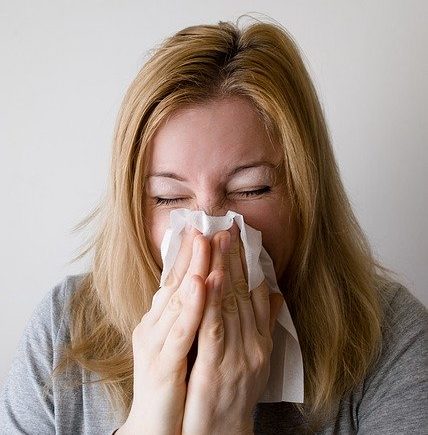Have you ever heard the expression It’s the sneezing season? Well, this can mean one of two things. Either, you have a cold or you have allergies due to a change in season. When you feel awfully ill, it is hard to determine, if you have a cold or it’s just allergies. There are several ways, you can tell the difference between a cold and allergies. Here are 8 ways to tell its allergies.
If you are suffering from allergies, these are the symptoms you may experience.
1.Itchy or watery eyes – Itchy watery eyes are triggered by histamine in the body and histamine is associated with allergies. If you take an antihistamine and find that your symptoms subside then it is a strong indication that you have allergies.
2.A sore throat -A sore throat can be attributed to a cold but it is also suffered by those who have allergies. If you have an inhaler and take a puff of it when experiencing an itchy throat -and the itchy throat subsides then it is a strong indication that you have allergies.
3. Eczema – Eczema is a skin irritation and has no correlation whatsoever between itself and the common cold. It is another symptom of allergies.
4. Conjunctivitis – While conjunctivitis is a viral infection, it can be brought on by irritants such as pollen or smoke. There is no concrete evidence that the common cold can give you conjunctivitis.
5. Post-nasal drip – Post-nasal drip is a common symptom of hay fever. It is common in the late stages of a cold. It is the body’s way of cleansing itself of the cold.
6. Coughing – Coughing is a strong indicator of allergies. We cough to rid our throat/airways of something foreign, or because we have been irritated by dust, or pollen.
7. Sneezing – Sneezing is caused by irritation from pollen, dust or other spores and irritants. Sneezing also happens when the cold virus starts to irritate mucous membranes inside your nose.
8. Congestion – Having a stuffy nose can be caused by allergic reactions to pollen, dust or other small particles inhaled during the day.
Some of these symptoms are also suffered by those who have a cold but the way to ascertain whether it is a cold versus allergies would be how quickly the symptoms came and when they left, how quickly did they leave you? The common cold can last 7 to 14 days, so if you have a stuffy nose for 1 day, and then nothing the next, it is safe to say it is allergies. If you are concerned about allergies, there are many premier allergy doctors out there to help you manage your symptoms.
If it is a cold, then you will experience any one of the following symptoms
- Runny or stuffy nose
- Sore throat
- Cough
- Congestion
- Slight body aches or a mild headache
- Sneezing
- Low-grade fever
- Generally feeling unwell (malaise)
Fever is not associated with allergies, so having a fever is a strong indication that you are experiencing a cold.
AS you can see there are some shared symptoms, but the likelihood of it being a cold is slim, if the symptoms left you as quickly as they arrived. If you are not sure it is allergies or a cold then you should see a doctor. Any premier allergy doctor will quickly determine your symptoms and treat you according to allergies, or a cold, as the case may be.

